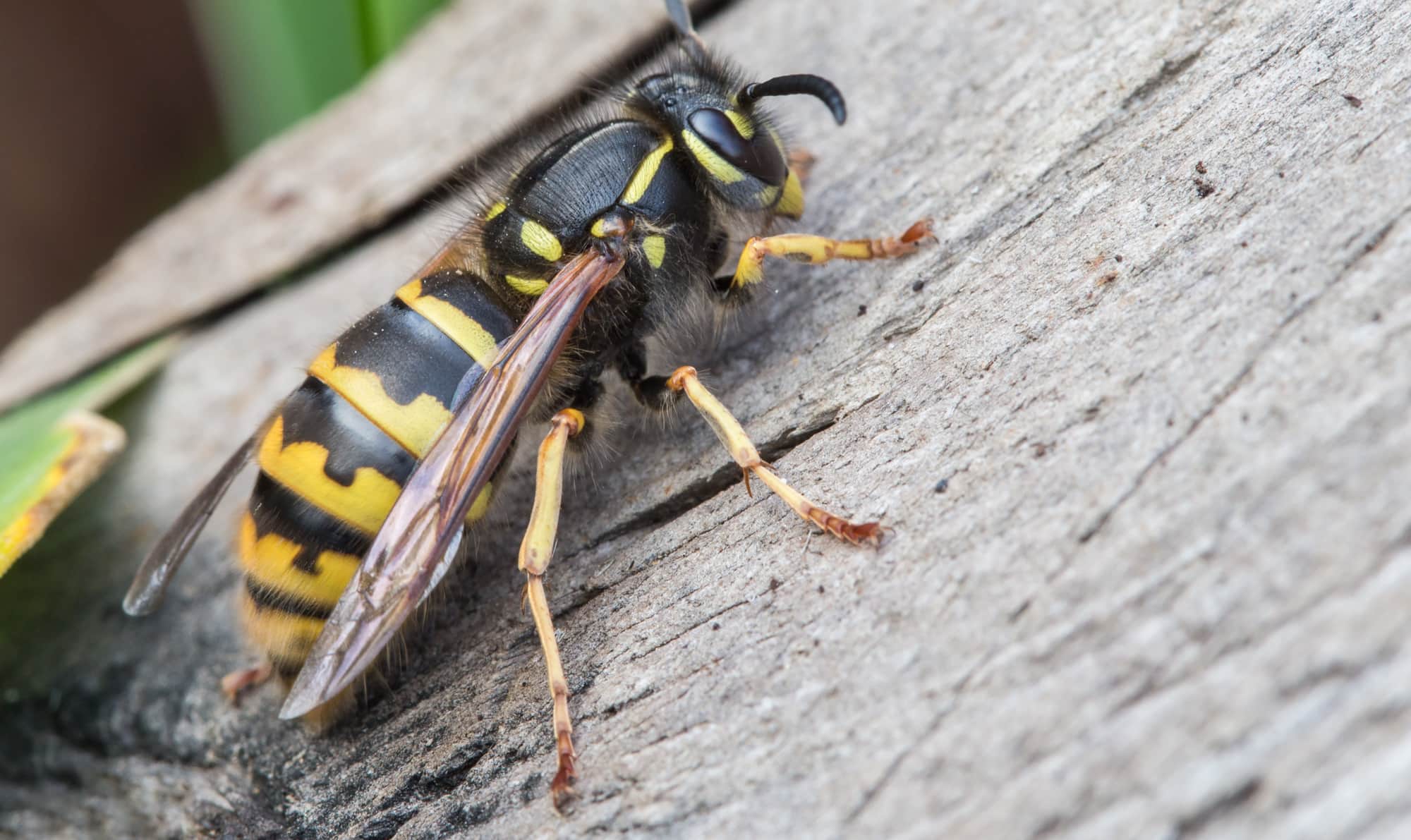Most people fear being stung by an arthropod, such as a wasp, spider or scorpion; however, a closer look reveals that public health may benefit from the careful application of venoms in medicine.

Potential Dangers of Arthropod Venom
Some arthropods make venom to protect themselves from danger and/or to capture their prey. These arthropods inject venom into their victims through a process called envenomation. Venoms may include toxins (e.g., inorganic or organic compounds, alkaloids, etc.) and other compounds (e.g., histamines, enzymes) that may enhance the effectiveness or “spread” of the toxins. Victims, such as humans or other animals, may experience a range of allergic reactions (from minor swelling to anaphylactic shock and death) to arthropod venoms.
Scientists have been able to extract relevant compounds from venoms to study their effects at controlled doses and under different environmental conditions. In some cases, venoms are even used in venom immunotherapy to desensitize people in advance of a sting.
How are arthropod venoms being used in medicine?
Different species of arthropods contain different compounds that may be useful, to some degree, in human health applications.
Researchers have discovered medical uses for some natural compounds (i.e., peptides) found in arthropod venom. Peptides contain less than or equal to 50 amino acid chains that are joined by peptide bonds. The antimicrobial activity of peptides found in arthropod venom can be important in protecting hosts from bacteria, viruses or fungi.
Bee venom
Bee venom contains several components, including melittin (a peptide), enzymes, amines (e.g., histamine) and non-peptides (e.g., lipids, carbohydrates). Melittin is the primary component of venom (besides water) and has been used in anti-inflammatory, anti-cancer and anti-viral treatments (Falco et al. 2013). Some researchers have shown that acupuncture (using live bees) can reduce depression in some individuals (El-Wahab and Eita 2015). Studies have also shown antibacterial effects of bee venom against bacteria, such as Staphylococcus aureus and Methicillin-resistant Staphylococcus aureus (MRSA) (e.g., Al-Ani et al. 2015). Ongoing research is investigating the potential for minimizing the damage to mammalian cells caused by mellitin if this compound is to be considered as a potential therapeutic compound.
Wasp venom
A main component of wasp venom is mastoparan, and this compound has antibacterial properties. However, the high degree of damage to mammalian cells has prevented its use as a therapeutic compound. Other compounds found in wasp venom (e.g., eumenine-mastoparan, aumenitin, protonectin, paulistine) are being explored for their antibacterial properties and seem to have a minimal effect on mammalian cells.
Ant venom
Ant venom can inhibit bacteria such as Enterococcus faecalis and Listeria monocytogenes. The types of antimicrobial peptides isolated from ants vary between ant species (e.g., polusulin I and II from the Jack jumper ant and solenopsins from the fire ant). In ancient times and today in some parts of Mexico, venom from red harvester ants is used to treat arthritis-like diseases (i.e., ants were placed on the affected areas and allowed to sting) (di Concini and Moreno 1988).
Scorpion venom
As described for other arthropods, the antibacterial properties of scorpion venom vary between species. For example, venom from an African ground scorpion showed no antibacterial properties, while venom from the Giant forest scorpion shows antibacterial properties against some tested bacteria. The enzyme called BmHYA from the Chinese red scorpion has been found (in cell culture) to assist in breast cancer therapy by inhibiting apoptosis in cells, facilitating the infiltration of anti-cancer drugs and suppressing the growth of breast cancer cells (e.g., Sarfo-Poku et al. 2016). Venom from the Arabian fat-tailed scorpion can suppress breast cancer cell growth (in cell culture) (Zargan et al. 2011). More information is needed on the mechanisms behind how these venoms impact cancer cells.
Spider venom
A variety of compounds have been isolated from spider venom and found to have antimicrobial properties. For example, lysosin-I from wolf spider venom can inhibit bacteria such as Shigella dysenteria and Staphylococcus aureus. The same compound has been shown to suppress cancer cell growth.
Centipede venom
Venoms from several species of centipedes have been used for their antibacterial properties. The following antibacterial peptide compounds have been extracted from the venom of Chinese red-headed centipedes: scolopin I, scolopin II, scolopendrin I.
For centuries, venom from arthropods has been used in medical cultures (often with “magical” properties) around the world. Now that laboratory scientists are studying the compounds contained in arthropod venoms, there is a greater possibility for their use (natural venoms and/or synthetic versions of natural venoms) as alternatives and/or supplements in modern medicine. More work is needed to explore the possibilities of using arthropod and other types (e.g., snake) of venoms for medical applications.
References
Al-Ani I, Zimmerman S., Reichling J, Wink M (2015) Pharmacological synergism of bee venom and melittin with antibiotics and plant secondary metabolites against multi-drug resistant microbial pathogens. Phytomedicine 22: 245-255.
Ramos-Elorduy de Concini J, Pino Moreno JM (1988) The utilization of insects in the empirical medicine of ancient Mexicans. Journal of Ethnobiology 8: 195–202.
El-Wahab SDA, Eita WLH (2015) The effectiveness of live bee sting acupuncture on depression. Journal of Nursing and Health Science 4: 19-27.
Falco A, Barrajon-Catalan E., Menendez-Gutierrez MP, Coll J, Mocol V, Estepa A (2013) Melittin-loaded immunoliposomes against viral surface proteins, a new approach to antiviral therapy. Antiviral Research 97: 218-221.
Sarfo-Poku C, Eshun O, Lee KH (2016) Medical application of scorpion venom to breast cancer: A mini-review. Toxocon 122: 109-112.


